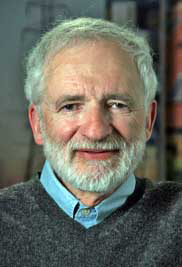 şÚÁĎÍř will host its second annual Symposium on Advances in Organic Photovoltaics (OPVs) on April 17 from 9 a.m. to 6:15 p.m. in the Moulton Hall Ballroom on the Kent Campus. The symposium is a platform for discussions about OPV research, opportunities and development. The focus of this year’s symposium is on the progress made in recent years; it will provide a perspective on breakthroughs that are imminent in the OPV field in coming years. The symposium is free and open to the public.
şÚÁĎÍř will host its second annual Symposium on Advances in Organic Photovoltaics (OPVs) on April 17 from 9 a.m. to 6:15 p.m. in the Moulton Hall Ballroom on the Kent Campus. The symposium is a platform for discussions about OPV research, opportunities and development. The focus of this year’s symposium is on the progress made in recent years; it will provide a perspective on breakthroughs that are imminent in the OPV field in coming years. The symposium is free and open to the public.
OPVs are specialized, carbon-based materials used in solar cells and unlike typical solar cells that are silicon or thin-film-based. OPVs are flexible and have the potential to be produced at much lower costs than conventional solar cells using processes such as jet-printing, spray painting and roll-to-roll manufacturing.
The symposium’s morning keynote speaker is Jean-Luc Brédas, Ph.D., a Regents Professor of Chemistry and Biochemistry at the Georgia Institute of Technology who holds the Vasser-Woolley and Georgia Research Alliance Chair in Molecular Design. His most recent awards include the 2010 Charles H. Stone Award of the American Chemical Society and the 2013 David Adler Award in Materials Physics of the American Physical Society.
Brédas’ presentation, “Electronic and Optical Processes in Organic Solar Cells,” will provide insights from a multiscale computational approach to provide a molecular picture of the packing configurations at the interface between the donor and acceptor components.
The afternoon keynote speaker is Arthur Nozik, Ph.D., a senior research fellow (emeritus) of the National Renewable Energy Laboratory and professor adjoint at the University of Colorado’s Department of Chemistry and Biochemistry. His research interests include size quantization effects in semiconductor quantum dots, multiple exciton generation, photogenerated carrier relaxation dynamics, and photoelectrochemistry of interfaces. He has been awarded the 2013 Heinz Gerischer Award (Electrochemical Society), the 2011 Gustavus Esselen Award (American Chemical Society), the 2009 Science and Technology Award (UN affiliated Intergovernmental Renewable Energy Organization) and the 2008 Eni Award (President of Italy).
Nozik will present “Multiple Exciton Generation in Quantum Dots, Quantum Dot Arrays, Quantum Dot Solar Cells, and via Molecular Singlet Fission: Application to Next Generation Solar Photon Conversion” at 1:30 p.m.
 Kent State’s initiative on OPVs started in 2009 when a group of its faculty members from the Departments of Physics, Chemistry, Chemical Physics, and the College of Technology developed a proposal under the Coordinated Research Hiring Initiative to create three new faculty positions. One of those positions was filled last year and the search for the second position is currently underway.
Kent State’s initiative on OPVs started in 2009 when a group of its faculty members from the Departments of Physics, Chemistry, Chemical Physics, and the College of Technology developed a proposal under the Coordinated Research Hiring Initiative to create three new faculty positions. One of those positions was filled last year and the search for the second position is currently underway.
“For several years, researchers at Kent State have been conducting OPV research in a niche area of small organic OPV molecules that exhibit one or more partially ordered phases at elevated temperatures,” says Satyendra Kumar, Ph.D., associate vice president for research, and symposium chairperson. “This symposium provides us an opportunity to exchange ideas with regional and international leaders in the field of OPVs.”
Kent State is launching a major research and development initiative in organic photovoltaics, called "flexPV™," which focuses on flexible solar cell technology enabled by OPV materials. The technology is based on self-organizing organic small molecules, nanostructured polymers and dyes, conventional silicon and thin film-based technologies.
“Kent State sees a high potential for the research and development of OPV and will continue to hire new faculty and build labs specifically for research opportunities in the field,” says Grant McGimpsey, Ph.D., Kent State’s vice president for research. “OPV fits well with our focus on sustainability at the university.”
The symposium features invited presentations from professionals in the region, including Liming Dai, Ph.D., of Case Western Reserve University, Max Shtein, Ph.D., of the University of Michigan, Xiong Gong, Ph.D., of the University of Akron, and Randy Ellingson, Ph.D., of the University of Toledo. Kent State faculty members Barry Dunietz, Ph.D., and Qi-Huo Wei, Ph.D., also will present at the symposium. Rick Earles of NorTech will wrap up the symposium presentations with an update on NorTech’s role in fostering commercial opportunities for flexPV™. A poster session and reception will follow the presentations starting at 5 p.m.
For more information and to register, visit www.kent.edu/opv.
